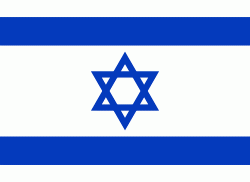Kafr Kanna (Kafr Kannā)
Kafr Kanna (كفر كنا, Kafr Kanā; כַּפְר כַּנָּא) is an Arab town in the Galilee, part of the Northern District of Israel. It is associated by Christians with the New Testament village of Cana, where Jesus turned water into wine. In its population was. It has a religiously mixed population of Muslims and Christians from different denominations.
Kafr Kanna is mentioned in an extant 9th-century Islamic marble stele. Under Crusader rule, from the 12th to mid-13th centuries, it was a casale (country estate). Kafr Kanna had become a large village by 1300, during Mamluk rule. It flourished as one of the largest localities in Palestine and one of the two market towns of the Safed Sanjak under Ottoman rule in the 16th century, when its population was mostly Muslim with a significant Jewish minority. By the 19th century, its population was roughly equal parts Muslim and Christian, a state which persisted through British Mandatory rule (1917-1948). Since 1948, it is a part of Israel.
Kafr Kanna is mentioned in an extant 9th-century Islamic marble stele. Under Crusader rule, from the 12th to mid-13th centuries, it was a casale (country estate). Kafr Kanna had become a large village by 1300, during Mamluk rule. It flourished as one of the largest localities in Palestine and one of the two market towns of the Safed Sanjak under Ottoman rule in the 16th century, when its population was mostly Muslim with a significant Jewish minority. By the 19th century, its population was roughly equal parts Muslim and Christian, a state which persisted through British Mandatory rule (1917-1948). Since 1948, it is a part of Israel.
Map - Kafr Kanna (Kafr Kannā)
Map
Country - Israel
 |
 |
| Flag of Israel | |
The Southern Levant, of which modern Israel forms a part, is on the land corridor used by hominins to emerge from Africa and has some of the first signs of human habitation. In ancient history, it was where Canaanite and later Israelite civilizations developed, and where the kingdoms of Israel and Judah emerged, before falling, respectively, to the Neo-Assyrian Empire and Neo-Babylonian Empire. During the classical era, the region was ruled by the Achaemenid, Macedonian, Ptolemaic and Seleucid empires. The Maccabean Revolt gave rise to the Hasmonean kingdom, before the Roman Republic took control a century later. The subsequent Jewish–Roman wars resulted in widespread destruction and displacement across Judea. Under Byzantine rule, Christians replaced Jews as the majority. From the 7th century, Muslim rule was established under the Rashidun, Umayyad, Abbasid and Fatimid caliphates. In the 11th century, the First Crusade asserted European Christian rule under the Crusader states. For the next two centuries, the region saw continuous wars between the Crusaders and the Ayyubids, ending when the Crusaders lost their last territorial possessions to the Mamluk Sultanate, which ceded the territory to the Ottoman Empire at the onset of the 16th century.
Currency / Language
| ISO | Currency | Symbol | Significant figures |
|---|---|---|---|
| ILS | Israeli new shekel | ₪ | 2 |
| ISO | Language |
|---|---|
| AR | Arabic language |
| EN | English language |
| HE | Hebrew language |















